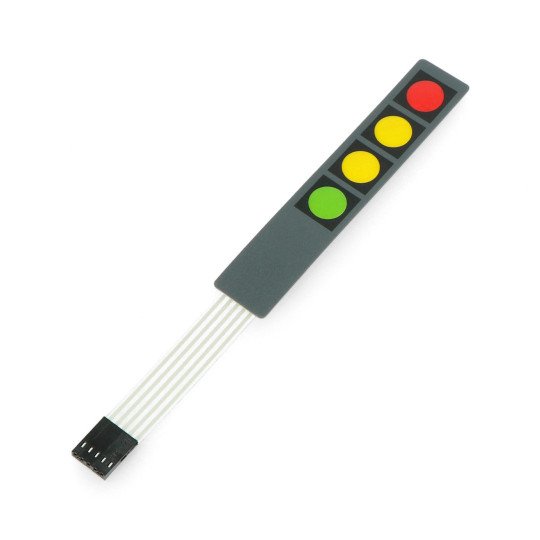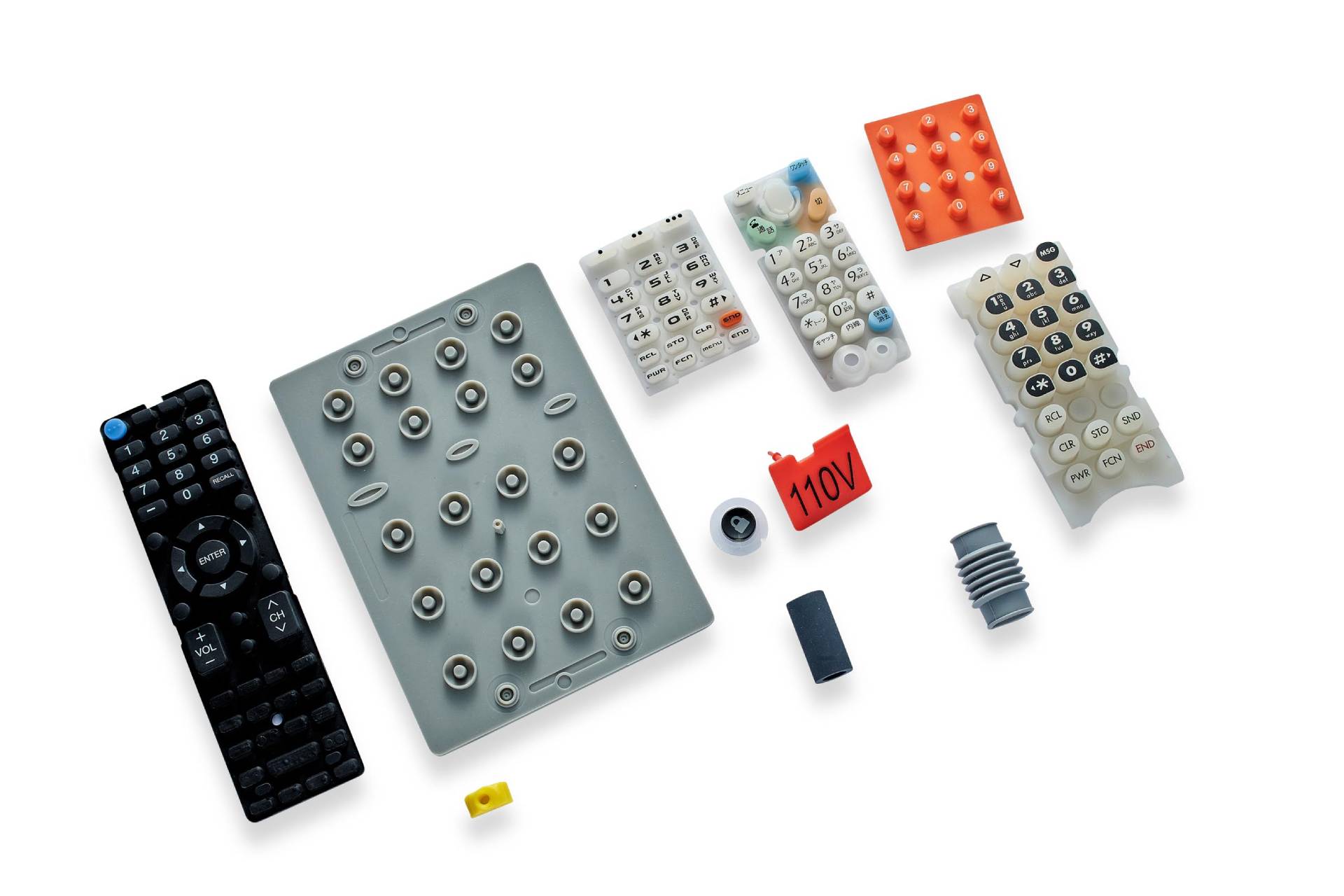Your Go-To Membrane Switch Manufacturer for Industrial Applications
Exploring the Production Refine of Membrane Switch for Numerous Industries
The production process of Membrane switches is an intricate venture that requires precision and attention to information. From choosing suitable materials to applying extensive quality control steps, each step plays an important function in guaranteeing performance. Various markets, including clinical and vehicle, count on these elements for their unique applications. Understanding the details of this procedure reveals considerable understandings right into exactly how these switches are generated and their impact across varied fields.
Understanding Membrane Changes: An Introduction

Key Materials Used in Membrane Switch Manufacturing
In Membrane switch production, the selection of essential products considerably influences performance and resilience. Conductive products, adhesives, and layers play crucial duties, while substrate choice affects overall performance and integrity. Understanding these components is crucial for enhancing the design and production of Membrane switches.
Conductive Products Review
Conductive materials play an essential role in the capability of Membrane switches, ensuring reputable electrical links within the device. Frequently utilized materials include silver, copper, and carbon-based inks, each offering unique benefits. Silver is preferred for its high conductivity and resilience, making it ideal for applications requiring robust performance. Copper, while a little less conductive than silver, is a cost-efficient option frequently utilized in printed circuits. Carbon-based inks provide a flexible choice, suitable for applications where versatility and reduced prices are prioritized, although they have actually reduced conductivity contrasted to metal alternatives. The selection of conductive materials directly influences the total integrity, lifespan, and efficiency of the Membrane button, making it an essential factor to consider in the manufacturing process.
Adhesives and Coatings
Finishes and adhesives are crucial components in the production of Membrane switches, providing crucial bonding and safety buildings. These products assure that various layers of the switch, including visuals overlays and wiring, stick safely to one another, boosting durability and functionality. Generally made use of adhesives consist of pressure-sensitive adhesives (PSAs) and epoxy-based formulas, which provide strong bond and strength. Coatings, such as polyurethane or acrylic, offer to safeguard against ecological elements, including moisture, abrasion, and chemicals. In addition, coatings can boost tactile comments and aesthetic allure, adding to the overall individual experience. The option of suitable adhesives and finishings is critical for maximizing performance and durability in varied applications throughout different industries, guaranteeing that Membrane switches over meet specific operational demands.
Substratum Option Elements
Substrate option plays a crucial duty in the production of Membrane buttons, as it significantly affects their overall performance and toughness. Trick materials such as polyester, polycarbonate, and adaptable printed circuit boards (FPCBs) are generally utilized for their unique buildings. Polyester is favored for its cost-effectiveness and resistance to abrasion, making it suitable for applications with high wear. Polycarbonate deals exceptional clarity and effect resistance, ideal for settings needing high presence. FPCBs offer improved versatility and are frequently made use of in intricate styles. The choice of substrate additionally affects variables like thermal stability, chemical resistance, and simplicity of printing. Inevitably, selecting the ideal substrate is important for ensuring the capability and longevity of Membrane changes across numerous sectors.
The Design Process of Membrane Switches
The design process of Membrane buttons is a vital stage that considerably affects the capability and aesthetic appeals of the last product - membrane switch manufacturer. It begins with defining the certain needs of the application, including dimensions, button design, and tactile comments choices. Developers have to take into consideration individual communication, making certain that the switch is intuitive and accessible.Next, materials are picked based upon resilience, versatility, and environmental resistance. The integration of graphics and branding aspects is likewise crucial, as it improves aesthetic allure and interaction. Prototyping enables repetitive testing, making it possible for changes based on individual comments and performance evaluations.Additionally, the design must account for the electrical parts, such as circuits and adapters, making certain integrity and convenience of usage. Inevitably, an effective style balances performance, visual appeals, and user experience, leading the way for reliable manufacturing and long-lasting efficiency in various industries
Printing Methods for Membrane Switches
The printing techniques used in Membrane button production play a vital role in figuring out the end product's top quality and performance. Screen printing offers benefits such as sturdiness and vibrant color application, while electronic printing developments supply adaptability and precision in layout. Comprehending these approaches can substantially impact the total efficiency of Membrane buttons in different applications.
Display Printing Advantages
Countless advantages make display publishing a preferred technique for creating Membrane buttons. This approach enables high-grade, lively shades and detailed layouts, which are essential for user interface applications. Display printing is specifically reliable for using thick ink layers, improving longevity and tactile feedback. Furthermore, it supplies excellent adhesion to various substratums, guaranteeing durability in requiring atmospheres. The process is economical for huge production runs, as it reduces configuration time and waste. Screen printing sustains a large array of inks, including specialized and UV-curable options, making it possible for convenience in style. Its ability to generate constant results throughout multiple devices makes it a dependable choice for makers aiming for top quality and performance in Membrane button production.
Digital Printing Innovations

Innovations in electronic printing innovation are changing the manufacturing of Membrane switches, using manufacturers cutting-edge services that improve layout flexibility and performance. Digital printing permits high-resolution graphics and complex layouts, enabling custom branding and capability without the limitations of standard approaches. This strategy decreases setup times and expenses, assisting in much shorter manufacturing runs and very little waste, making it ideal for companies with differing needs. Additionally, improvements in ink formulas provide much better toughness and adhesion, making sure long life in different atmospheres. As markets increasingly look for complicated and tailored designs, electronic printing attracts attention as a necessary strategy, setting a new standard in Membrane switch manufacturing. The integration of these advancements positions producers to meet advancing market requires successfully.
Setting up and Layering of Membrane Switch Parts
Mindful setting up and layering of Membrane switch parts are important to guaranteeing capability and durability. This procedure begins with the specific alignment of various layers, consisting of the visuals overlay, sticky, circuit layer, and backing material. Each element has to be thoroughly placed to maintain electric integrity and interface responsiveness.During setting up, conductive traces are put on the circuit layer, usually made from materials like polyester or polycarbonate. This layer is essential, as it sends signals when stress is used. The sticky utilized for bonding these layers is likewise chosen for its ability to withstand ecological stress and anxieties while preserving a protected bond.Heat and pressure are often used throughout the setting up procedure to ascertain that the layers stick effectively without endangering the performance of the button. Focus is provided to the side sealing to protect versus wetness and impurities, protecting the long life of the Membrane button in different industrial applications.
Quality Assurance Procedures in Membrane Switch Manufacturing
Quality assurance steps play a necessary role in making certain the integrity and performance of Membrane changes following the assembly and layering of their elements. In the production process, numerous vital examinations are carried out to support top quality requirements. These consist of visual inspections for problems in printing and glue application, along with useful tests to validate the responsiveness of each switch.Additionally, environmental testing is done to analyze the buttons' toughness versus temperature level variations and humidity exposure. Suppliers typically carry out analytical procedure control (copyright) strategies to keep an eye on manufacturing consistency, making it possible for early detection of anomalies.Furthermore, traceability systems are established to track materials and parts, making certain liability and assisting in remembers if required. Calibration of tools and adherence to sector requirements are additionally vital to keeping product integrity. Jointly, these quality assurance actions protect the performance image source of Membrane switches throughout numerous applications, eventually enhancing consumer satisfaction.
Applications of Membrane Changes Throughout Different Industries
Membrane switches are used across a diverse selection of markets, showcasing their flexibility and versatility. In the medical field, they give water-proof and trusted interfaces for devices such as diagnostic tools and mixture pumps, making sure health and simplicity of usage. The automobile industry employs Membrane switches for control panel controls, allowing seamless interaction between the chauffeur and lorry systems.In customer electronic devices, these buttons are discovered in home appliances and portable tools, providing a streamlined, contemporary aesthetic while improving performance. helpful site Industrial applications additionally utilize Membrane switches over for equipment control board, where resilience and resistance to severe problems are essential.Furthermore, the aerospace and protection sectors use Membrane buttons for cabin instrumentation and communication systems, prioritizing dependability and performance under extreme conditions. On the whole, Membrane switches play a crucial role in enhancing the user experience and functional efficiency across various domain names.
Regularly Asked Inquiries
How much time Does It Take to Make a Membrane Layer Switch?
The manufacturing time for a membrane layer button commonly ranges from a couple of days to a number of weeks - membrane switch manufacturer. Elements influencing this period consist of style complexity, product accessibility, and production quantity, all affecting the overall timeline substantially
What Is the Regular Life Expectancy of a Membrane Switch?
The regular life expectancy of a membrane layer button typically varies from 1 to 5 million actuations, depending on aspects such as worldly quality, ecological conditions, and use frequency, greatly influencing toughness and overall performance.
Can Membrane Switches Over Be Customized for Certain Applications?
Membrane switches can indeed be personalized for certain applications. Their design adaptability enables modifications in size, shape, shades, and graphics, guaranteeing compatibility with one-of-a-kind demands click throughout various industries and boosting performance and user experience.

Are Membrane Changes Environmentally Friendly?
The environmental influence of Membrane changes differs. Some products utilized might not be eco-friendly, while improvements in making processes are progressively concentrating on sustainability, intending to reduce waste and promote recyclable parts in their manufacturing.
What Are the Usual Failure Modes of Membrane Switches?
Usual failing settings of Membrane buttons consist of delamination, sticky failure, wear and tear from usage, wetness ingress, and electrical failings. These concerns can substantially affect performance, efficiency, and lifespan in different applications across different industries. Membrane switches can be customized to fit particular design requirements, such as functionality, dimension, and form, making them very adaptable.The building and construction generally includes multiple layers, including a graphic overlay, adhesive, and a circuit layer, which function together to develop a smooth customer experience. In Membrane button production, the option of essential materials greatly influences capability and durability. The auto sector utilizes Membrane buttons for control panel controls, enabling smooth interaction in between the motorist and lorry systems.In consumer electronic devices, these switches are found in devices and handheld devices, supplying a smooth, modern visual while improving functionality. Industrial applications additionally take advantage of Membrane switches for equipment control panels, where longevity and resistance to extreme conditions are essential.Furthermore, the aerospace and defense industries make use of Membrane buttons for cockpit instrumentation and interaction systems, prioritizing integrity and performance under severe problems. Membrane switches can undoubtedly be tailored for certain applications.